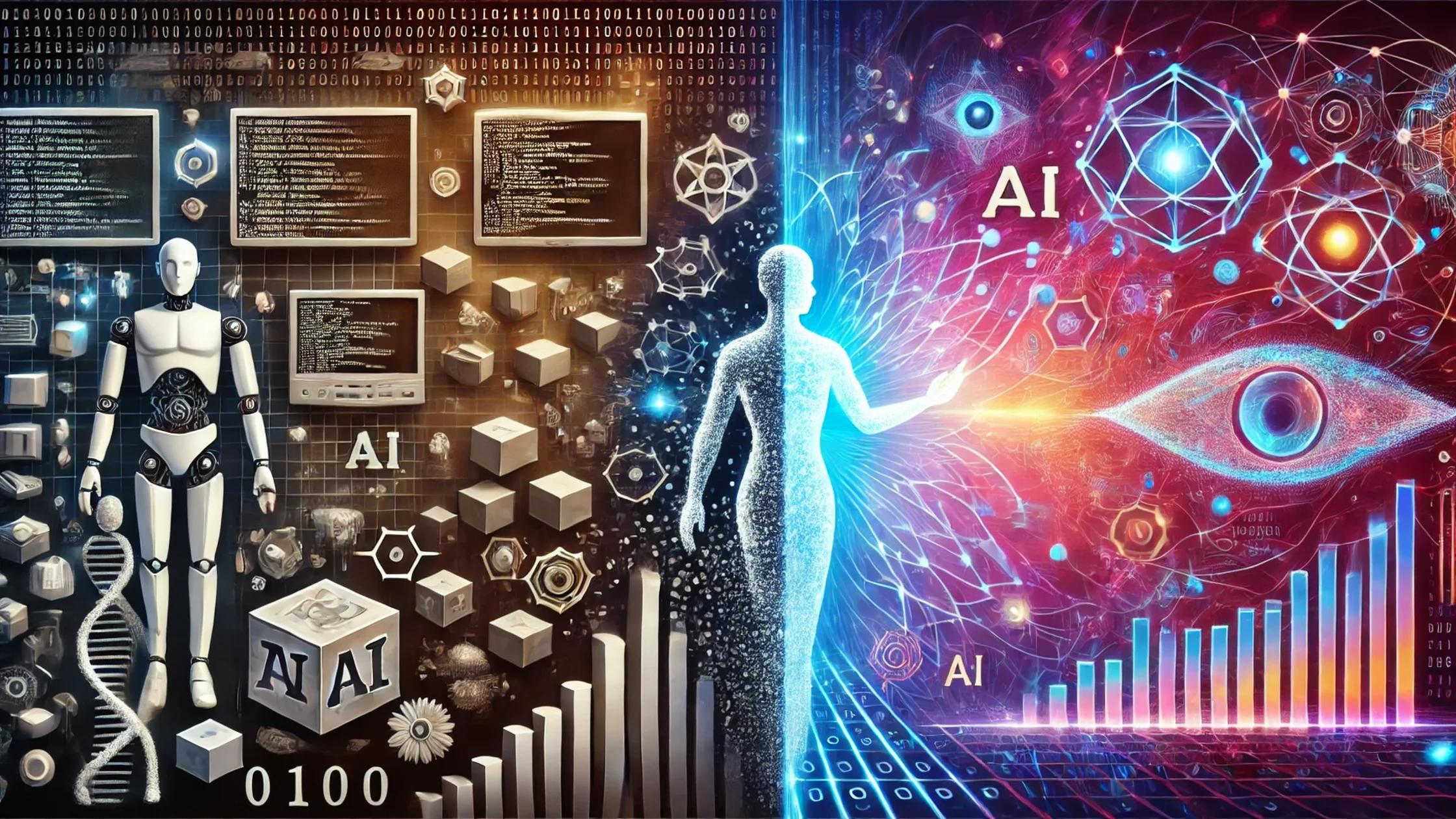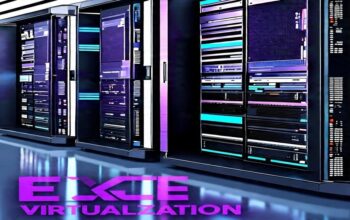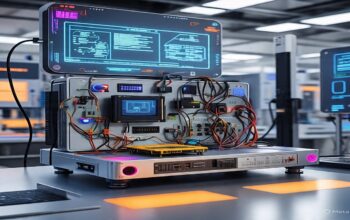In a world characterized by ever-changing technological horizons, artificial intelligence has changed the shape of businesses and industries worldwide. But one of the most interesting trends in advancement is the emergence of AI agents as intelligent systems that can automate tasks, learn, and evolve with interactions. This has led to a fascinating study: AI agents against traditional software. Each possesses its strengths and use cases. But what’s the difference, and which is the best for your specific use case?
Let’s look at what differentiates AI agents from traditional software.
Covered Contents
Toggle1. What is Traditional Software?
Traditional software refers to any application or program that executes based on pre-defined rules and code input by developers. It is commonly rule-based and operates within determined parameters. General examples of traditional software include office suites, such as MS Word and MS Excel, CRM tools like ERP systems, games, and various other static applications. Traditional software comprises rigid instructions, hence one of its major characteristics. Should the user interact with the program differently than anticipated, the software will not react accordingly, leading to errors in most cases and system crashes at best.
2. What are AI Agents?
AI agents are independent systems, able to sense their environment, process information, and take action based on input that doesn’t come from a human in direct ways. They are built to “learn” from data, interactions, and experiences, thus becoming more efficient as time passes.
The three main classes of AI agents are:
Conversational Agents: Such as chatbots and virtual assistants
Autonomous Systems: Including self-driving cars and robotic process automation
Reinforcement Learning Agents: For example, AI in gaming or simulations
These agents simulate intelligent behavior using machine learning, NLP (Natural Language Processing), and reinforcement learning and are thus quite different from traditional software because of their adaptability.
READ MORE: Beyond the Hype: Creating Societal Confidence in AI Agents
3. Key Differences: AI Agents vs Traditional Software
Aspect | AI Agents | Traditional Software |
Functionality | Learns and adapts | Follows fixed rules |
Adaptability | Improves over time | Static, no learning |
Interaction | Dynamic, environment-aware | Predefined inputs/outputs |
Decision-Making | Autonomous, data-driven | Rule-based, manual |
Examples | Self-driving cars, assistants | Word processors, spreadsheets |
Learning and Adaptability:
Traditional Software: Static. Its application and functionality do not change once it’s developed and deployed; usually, updating or altering it as necessary by the developers. It follows rules set in advance, so it does not learn new situations unless that is programmed as part of its function.
AI Agents: The contrast, though, is that AI agents can learn and get better. That’s why a virtual assistant such as Siri or Alexa gets better with voice commands and contextual understanding as more data are being processed. The same can happen to AI agents in customer service: getting better in their responses over time through the help of past interactions and customer sentiment.
b. Automation Capabilities:
Traditional Software: Automates processes, but such automation depends on predefined logic. For instance, a spreadsheet application can automate calculations, but it will not know what to do when it encounters a new formula or an outlier in data.
AI Agents: They are more advanced in automation and can understand complex data and their analysis. AI chatbots for customer service understand customer queries and respond accordingly; thus, these agents can replace humans in completing tasks that might otherwise require intervention. Likewise, AI-driven automation tools change according to circumstances (for instance, market trends or customer preferences).
c. Problem-Solving and Decision-Making:
Traditional Software: In conventional software, it is only possible to follow the developers’ rules and instructions. It can only solve problems that it has been programmed for; under most circumstances, it will fail when new, unexpected situations arise.
AI Agents: AI agents, especially those based on machine learning and neural networks, can solve problems by making data-driven decisions. They can process massive amounts of data, identify patterns, and make decisions even in uncertain or dynamic environments. For instance, an AI agent in financial trading systems can learn to predict market movements based on historical data and adjust strategies accordingly.
d. User Interaction:
Traditional Software: Any user interaction is always clerical and explicit, feeding data, choosing options, and awaiting the computer’s response based on previous instructions.
AI Agents: A more natural interaction is now possible with AI agents. While voice recognition, contextual understanding, and emotion detection capabilities make even AI agents capable of engaging users in a much more meaningful way. For instance, a chatbot such as ChatGPT can merely answer questions, perform detailed tasks like content writing or coding, and provide recommendations based on behavioral patterns.
e. Scalability and Flexibility:
Traditionally, scaling was about scaling hardware, enhancing the hardware’s processing power, or reconfiguring the application itself. However, the inherent design of the software does not change.
AI Agents: AI agents are inherently more scalable. Once trained, AI models can be deployed across various environments and tasks, often with minimal reconfiguration. Thanks to their ability to self-improve over time, they can handle increased volumes of data or more complex environments.
4. Advantages and Limitations
Advantages of Traditional Software:
Stability: Traditional software is typically reliable and stable, as it operates on clear, predefined rules.
Predictability: It behaves the same way every time, which is useful for critical applications requiring consistent results.
Lower initial cost: Developing traditional software can be more straightforward and less resource-intensive than preparing AI models.
Limitations of Traditional Software:
Limited flexibility: This can’t adapt to new or unforeseen situations without manual updates.
Lack of intelligence: Traditional software cannot make decisions or learn from new data.
Advantages of AI Agents:
Adaptability: AI agents can learn and adapt using new data or experiences, which makes them well-suited to dynamic environments.
Improved automation: They can automate complex tasks involving judgment and decision-making.
Real-time insights: AI agents analyze real-time data, which offers businesses faster, more accurate insights.
Limitations of AI Agents:
Complexity: The process of training and developing AI agents is long and technical.
Data dependency: The performance of AI agents depends upon the quality and quantity of data they are exposed to.
Ethical matters: Bias and opacity in decision-making, responsibility up to an AI.
5. Which to Choose?
The choice between AI agents and traditional software is largely a question of need:
Traditional software is still the best choice for simple, repetitive tasks, but traditional software is still the way to go.
If you need adaptability, learning from data, and advanced automation for dynamic environments, AI agents are the clear winner.
For instance, this kind of software is best suited for applications such as word processing or inventory management, where processes are clear and predictable. Such tasks, including customer support, predictive analytics, and personalized recommendations, are well-suited for AI agents because they demand flexibility, learning, and real-time decision-making.
Conclusion: The Future of Software
Both AI agents and traditional software have their niches. Traditional software will always have its place in industries requiring stability and rule-based processes. But with AI’s power and accessibility, applications requiring real-time adaptability, learning, and decision-making will probably be dominated by AI agents.
With more businesses and developers looking to automate and innovate, AI agents will rise, but traditional software will be the staple for many core operations. This is likely to be the hybrid model of the future, where we get the best of both worlds.
Knowing the differences between AI agents and traditional software will help you decide which of these technologies would be most useful for your company and how they can further the business.
READ MORE: Top 10 AI agents Dramatically changing life in 2025


